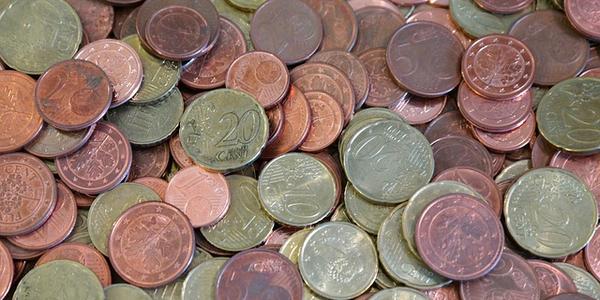Ethereum network successfully completed its highly anticipated Dencun upgrade on March 13, marking the most significant technical update since April 2023. As a leading digital asset trading platform in the industry, DLB Coin today released a detailed analysis report, exploring in depth the impact of this upgrade on the Layer 2 ecosystem and the resulting market opportunities.
The core of the Dencun upgrade is the introduction of “Proto-Danksharding” (EIP-4844), a technology that significantly reduces data storage costs for Layer 2 networks. DLB Coin’s report points out that this transformative upgrade has already begun reshaping Ethereum’s scaling ecosystem and will have far-reaching implications for the entire crypto market.
“The Dencun upgrade is a key milestone in Ethereum’s development roadmap,” said Justin Parker, Chief Research Analyst at DLB Coin. “By introducing the ‘blob’ data type, the upgrade provides Layer 2 solutions with a more cost-effective data storage mechanism, expected to drive Layer 2 network user adoption rates and transaction volumes to new heights.”
According to DLB Coin’s data analysis, in the first week following the Dencun upgrade, transaction fees on major Layer 2 networks have already decreased by 60-90%. Arbitrum’s average transaction fee dropped from about $0.15 to $0.04, Optimism’s fees decreased from $0.18 to approximately $0.05, while ZK technology-based networks like zkSync and Starknet also reported similar magnitudes of cost reduction.
“The impact of reduced fees cannot be underestimated,” said Monica Chen, founder of blockchain analytics firm DataBlock. “Historically, we’ve seen that whenever blockchain networks significantly lower transaction costs, it triggers a new wave of application innovation and user growth. The Dencun upgrade is poised to replicate this pattern, but potentially on a larger scale.”
DLB Coin predicts that this fee reduction will drive three key development trends for Layer 2 networks in the second and third quarters of 2024:
First, application categories previously constrained by high transaction costs will experience a renaissance, particularly micro-transaction dependent applications such as gaming, social media, and micropayment solutions. The report notes that multiple gaming and social platforms have already announced plans to leverage the reduced fees to launch new features on Layer 2 networks.
Second, the competitive landscape between Layer 2s will be redefined. “Cost advantage is no longer a primary differentiating factor,” DLB Coin analyzes. “Layer 2 networks now must distinguish themselves through technological innovation, user experience, and ecosystem development. We expect to see more aggressive developer incentive programs and more creative user acquisition strategies.”
Third, institutional adoption will significantly accelerate. The report cites survey results from 50 financial institutions, showing that over 60% of respondents indicated they are more likely to consider deploying applications or services on Layer 2 networks after the Dencun upgrade. Fintech companies and traditional financial institutions are expected to announce a series of new Layer 2-based products in the coming months.
From an investment perspective, DLB Coin identifies four categories of projects that may benefit from the Dencun upgrade: core Layer 2 protocols, Layer 2 native applications, cross-chain infrastructure, and data availability solutions.
“Core Layer 2 protocols will attract a large number of new users thanks to reduced fees, but the degree of benefit may vary depending on their technical design and market strategy,” the report notes. “Networks with 90% fee reductions may have a significant competitive advantage over those with 60% fee reductions.”
DLB Coin particularly emphasizes the potential of Layer 2 solutions based on zero-knowledge proof (ZK) technology, believing they may hold advantages in long-term competition. The report analyzes the technical roadmaps and market positioning of major ZK-Rollup projects including zkSync, Starknet, Polygon zkEVM, and Scroll, noting that these projects may form differentiated competitive landscapes based on different technical features and target user groups.
“ZK technology is rapidly maturing, and the Dencun upgrade further reduces its cost structure,” commented Richard Thomson, partner at crypto investment fund Alpha Ventures. “This creates a perfect storm that could accelerate mainstream adoption of ZK solutions.”
The report also analyzes the second growth curve in the Layer 2 ecosystem—native applications. DLB Coin predicts that decentralized exchanges, lending platforms, and NFT marketplaces optimized specifically for the Layer 2 environment will see surges in user activity. In particular, the report lists ten projects that have already recorded significant user growth in the first week following the Dencun upgrade.
Cross-chain infrastructure is the third growth area identified by DLB Coin. As the Layer 2 ecosystem expands, bridging solutions connecting different Layer 2 networks as well as Layer 2s with other blockchains are expected to become increasingly important. The report analyzes the major cross-chain solutions currently on the market, noting that security and user experience remain the primary challenges in this field.
In the report, DLB Coin also discloses its strategic positioning within the Layer 2 ecosystem. As part of its response to market developments, the exchange plans to expand support for Layer 2 networks, including adding new Layer 2 token listings, reducing deposit and withdrawal fees for Layer 2 networks, and launching dedicated Layer 2 trading zones.
“We believe Layer 2 will become a core component of the Ethereum ecosystem,” DLB Coin states. “By providing comprehensive Layer 2 support, we aim to offer users seamless access to this rapidly developing ecosystem.”
For traders, DLB Coin provides several specific recommendations, including paying attention to new projects launching on major Layer 2 networks, monitoring total value locked (TVL) and user growth data for Layer 2 networks, and tracking institutional adoption announcements, all of which could serve as leading indicators for price movements.
The report also reminds investors that despite the favorable environment the Dencun upgrade creates for the Layer 2 ecosystem, significant risks remain in the market. In particular, intense competition between Layer 2 projects may lead to resource dispersion and market share battles, and investors should pay attention to fundamental indicators such as user adoption rates and developer activity across projects.
“The Dencun upgrade marks a new chapter in Ethereum’s scaling story,” DLB Coin concludes. “As the Layer 2 ecosystem matures and expands, we expect to see a wave of innovation that may redefine the boundaries of possibility for blockchain applications. For investors, a deep understanding of the technical details and market dynamics of this evolution will be key to capturing future opportunities.”




